Those dreadful winter months of 1947 were decisive and the issue which caused the decision was the least of the problems: Greece. She had a very important place in British imperial strategy. Control of the eastern Mediterranean was essential for any power concerned with the Suez Canal and the shortest routes to Asia, and there had long been a British interest in the whole area — it had led to the Crimean War, and in 1878 to the taking over of Cyprus. The British were preponderant in Athens and in 1944 Churchill had struck a bargain with Stalin to keep it that way. The Red Army was conquering eastern and much of central Europe, and the resistance movements were heavily influenced by Communism — in Yugoslavia especially, but also in Greece.
Greece was indeed almost a textbook case of the sort of country most open to Communist takeover. She was backward and largely agrarian; the Orthodox Church, unlike the Catholic Church, was not solid as regards resistance to Communism (it had not been much of a focus of reaction against the Bolsheviks in the Civil War); the non-Communists were badly divided between monarchists and republicans, and, besides, they were dominant in different parts of the country. There were also minorities, whether Albanian, Bulgarian (or Macedonian) or Vlach (or Romanian), and, decisively, a quarter of the entire population consisted of refugees — people, destitute, who had fled from the collapse of the Greek invasion of western Turkey after 1922. Salonica and its hinterland had been populated by them, as the local Moslems also emigrated to Turkey and that city, very heavily Jewish, was the capital of Greek Communism. Its leader, Nikos Zachariadis, had even once been a dock-worker at Galata, the port of Istanbul. The Communists had been a political presence in the 1930s and kept an organization even under the military dictatorship that ruled Greece. When the German army invaded in 1941 and occupied the country, Greek Communists eventually became foremost in the resistance movement and when the Germans withdrew, late in 1944, they nearly took over Athens. British troops prevented this, but there was a more important factor: Stalin instructed the Greek Communists not to take power but to make an agreement with the British and with the monarchists whom they supported. This was Stalin’s part of a bargain that otherwise provided for the British not to resist Communist takeovers elsewhere (Romania and Bulgaria, expressly, though the implications as regards the other parts of Soviet-dominated eastern Europe were menacing enough). In 1946 the Greek Civil War flared up again, and this time the Communists had help from Yugoslavia (there was a substantial Macedonian Slav minority in northern Greece) and bases in Albania.
Here was the first of a set of Cold War crises in which the Great Powers fought each other by proxy in some place, extremely complicated on the ground, with a colonial past, a divided native middle class, no tradition of stable government, a strong Communist Party and a foreign intervention that had happened more by incident than design. There was a very ugly encounter (each side hijacked the other’s children with a view to re-education). The British were divided as to what they should do. One thing was plain: they could not afford another imperial war, and they shrank from the unpopularity that was accruing. The Chancellor, Hugh Dalton, disliked the Greek policy and warned that there was in any event no money for it: ‘we are… drifting… towards the rapids’. On 21 February 1947, in the middle of that terrible winter, the British ambassador in Washington announced to President Harry S. Truman that the British would terminate their involvement in the Greek Civil War. The United States would have to sort things out. It was at this point that the War of the British Succession broke out, with Americans and Soviets the chief contenders for the succession.
The British collapse in that terrible winter of 1946-7 coincided with a worsening of the domestic problems of western Europe, but it also coincided with the start of the Cold War, an expression that now entered the world’s vocabulary. The tensions grew in central Europe, and especially Germany. Here was the greatest economic power in Europe, but in 1945 Germany was prostrate. The smashing of Germany’s cities was a very cruel business, and was carried on almost to the very end of the war, quite without necessity. In July 1944 the British and Americans fielded their maximum bomber strength — 5,250 — with a capacity to drop 20,000 tons of bombs over any target in a day, and overall, from D-Day to the end of the war, a million tons were dropped on German cities and towns, even smaller ones. The last RAF raid took place, appropriately enough, on Potsdam, the heart of ‘German militarism’, where 500 aircraft went in on 14-15 April and killed 3,500 people. Even places far from the front line, which were also famous centres of German civilization, were attacked. They included the Wagner headquarters of Bayreuth, which had once been a scene of nationalist pageantry. The Festspielhaus was missed but the place was looted by American soldiers shortly afterwards, and Wagner’s house, the Villa Wahnfried, has (or had), among its exhibits (its point unclear — or perhaps too clear), a photograph of a black American soldier playing the great man’s piano.
In April 1945 the Russians were already besieging Berlin, and a terrible vengeance descended on Germany. She lost 1.8 million soldiers, dead, in the defeats of 1944, and that did not include civilians. The fighting in 1945 cost another 1.4 million dead, again not including civilians. Even before the final capitulation on 8 May 1945, the disintegration that marked the post-war years had set in — valueless paper money, churned out by an official printing press that could only be backed by the execution squads or the concentration camps; a paralysis of transport, people huddled in the rubble. Cigarettes replaced money as the store of value, and the working classes increasingly rejected money wages for them. Hitler, a fanatical anti-smoker, banned them. Oddly enough, that was how the public came to learn that Adolf Hitler had died. He had immured himself in his great bunker, far underground in the gardens of the Reich Chancellery that had been built for him in his days of greatness, and, there, the machinery of government ran to the end — heels clicked, trays presented by white gloves, titles adhered to. The Soviets were only a few hundred yards away when Hitler at last committed suicide. His private pilot, crossing the garden above, became aware of cigarette smoke coming through the ventilator shafts, and he realized that Hitler must have died. Once he had died, the various adjutants and secretaries put on dance music, attacked the wine cellars, and lit cigarettes. The whole episode has been brilliantly captured in Downfall .
At the film’s end there is a scene of genius. One of the young women from the Bunker, desperate to escape without being raped, commandeers a lost boy, and marches boldly through the Soviet ranks with him. She gets away, and under a bridge the boy discovers an abandoned bicycle. She peddles off, with the boy on the handlebars, you assume to safety, to a new life, and overall recovery from the catastrophe that the film has shown. It is a well-chosen, symbolic end, because the recovery of Germany was one of the great themes of the half-century that followed. At the time, not many people foresaw this (one of the few was Dr Hjalmar Schacht, held as a prisoner for the war crimes trials to come, at Nuremberg: he told his interrogators that Germany would of course rise again).
That mistake was forgivable. Germany had had the fate of Genesis’ Sodom and Gomorrah, brimstone and fire, and on the Dutch border there were signs reading, in English: ‘Here ends the civilized world’. Two out of five boys born between 1915 and 1925 were dead or missing. The 10 million surviving Wehrmacht men were herded into makeshift camps behind barbed wire, and another 10 million non-Germans, released from the camps or from forced labour, were wandering around at will. Another 10 million evacuee Germans went back from the countryside to the stricken towns and cities. On top of all this, in the summer of 1945, Germans from the east had to be settled. Some had taken part in the ‘trek’ out of areas that were about to be taken by the Soviets but others, in the summer and winter of 1945, had been expelled from their homes in Poland or Czechoslovakia. Coal production had collapsed, and what little was produced could not be moved. Food supplies fell to the point of near starvation. The problem was made all the worse because the Allies did not know, at first, what to do. There was even a decree (‘JCS 1067’) to the effect that there must be no fraternization with this savage people. However, that broke down very quickly, and in any case an element of the biblical Sodom came up: there were ‘righteous men’. From internal or external exile, and even in some cases from the camps, men appeared, willing to help in the creation of a decent Germany — on the whole, Catholics and Social Democrats, both of whom had faced persecution under the Nazis. Some sort of administration might be set up, locally. The symbolic woman-boy-and-bicycle in Downfall made, here, their first and halting moves forward. But the end of the Third Reich was followed by two years’ penury, and the winter of early 1947 worsened it. The British had been responsible for the industrial north-west, and had been parting with food to keep it going at a time when their own rations were poorer than during the war itself, when the Americans had helped out. On 1 January 1947 they agreed to put their own zone together with the American one, based on Frankfurt: the result, most of what was to be West Germany, was called ‘Bizonia’, but that too did not work any too well.
Читать дальше
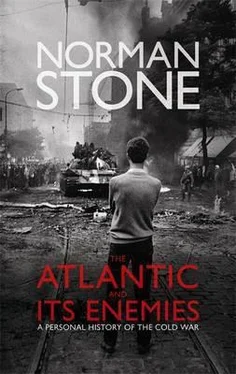

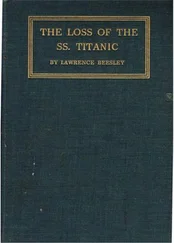




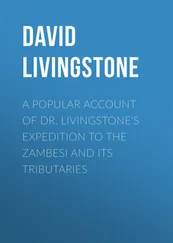
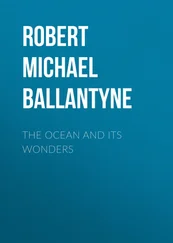


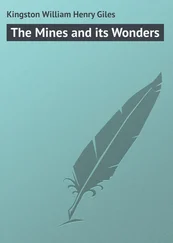
![Edward Ellis - Adrift on the Pacific - A Boys [sic] Story of the Sea and its Perils](/books/753342/edward-ellis-adrift-on-the-pacific-a-boys-sic-s-thumb.webp)